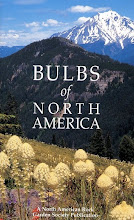Madison Valley Stormwater Park May 2012
Madison Valley Stormwater Park May 2012
Madison Valley Stormwater Park May 2012
Lupine in the Madison Valley Stormwater Park May 2012
Madison Valley Stormwater Park May 2012
The Madison Valley Stormwater Park, also known as the Phase 1 of the Madison Valley Stormwater Project & the Madison Valley Drainage Basin, is a response to flooding in Madison Valley during times of heavy rain fall. Tragically, a Madison Valley woman, Kate Fleming, died when a flash flood trapped her inside her basement studio in December 2006. The nicely landscaped basin makes a very pleasant park.
From the Seattle Public Utilities website: The Madison Valley drainage basin in Seattle is an area
that is located east of Capitol Hill, west and south of Washington Park,
and north of the Central District. Shaped by a glacier and eroded by
floods, the valley has steep hillsides and was once drained by a stream
that emptied into Union Bay via what is now the University of Washington
Arboretum. In the late 1860s, a wagon road was cut through from
downtown to Madison Park along the current route of E Madison St. In the
1880s, a cable railway with a trestle across the valley was constructed
to provide better access to Madison Park and environs. In the early
1900s, the trestle was replaced with fill, which blocked the natural
watercourse, and a combined sewer trunk pipe was built to carry
sewage and stormwater under the fill and northward.
Over the past several decades, there have been a number
of instances of flooding in Madison Valley. On August
22, 2004 and December 14, 2006, storm events which hit the city and the
Madison Valley neighborhood were especially severe, causing some
residents around 30th Ave. E and E John St. to have up to 5 feet of
water in their basements and flooding in their backyards. Seattle Public Utilities built an interim stormwater holding area at 30th
Ave. E and E John St. which was completed in late December 2006 and
holds up to 1 million gallons of stormwater during large rain storms. As the alternatives for the long-term solution were
considered, improving stormwater infrastructure on E Madison St. near
29th Ave. E also was an important consideration. Seattle Public Utilities undertook an
extensive public involvement effort through the development and
selection of the preferred alternative, which was approved for
implementation by Seattle City Council and the mayor in June 2008.
Phase 1 of the Madison Valley Stormwater Project included the expansion
of the 1 million gallon above-ground stormwater holding area at 30th
Ave. E and E John Street. This facility now has the capacity to hold 1.7
million gallons of stormwater during very large storms. Construction of Phase 1 began in summer 2009 and the expanded stormwater holding area was operational by the end 2009. Click here for a plan of the park.








































































